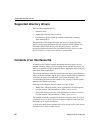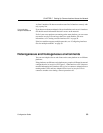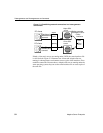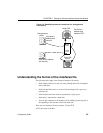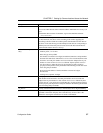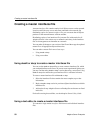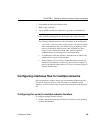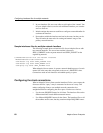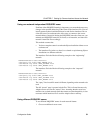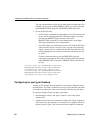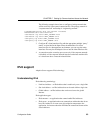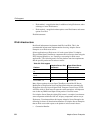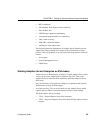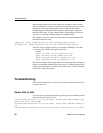
Configuring interfaces files for multiple networks
60 Adaptive Server Enterprise
2 In your interfaces file, use a text editor to add copies of the “master” line
for your Adaptive Server; one for each additional interface you want the
server to listen on.
3 Include a unique host name on each line to configure a network handler for
each network interface.
4 Port numbers within the interface need not be the same, but they can be.
They fall under the same rules for naming and numeric range as the
primary network interface.
Sample interfaces files for multiple network handlers
The following example shows an interfaces file for an Adaptive Server with
two network interfaces. The server host machine is known as
SERV_CORPNET on the corporate network and SERV_ENGNET on the
engineering network.
# PRODUCTION server with two network listeners
PRODUCTION<tab>3<tab>3<newline>
<tab>master tcp ether SERV_CORPNET 4559
<tab>master tcp ether SERV_ENGNET 5479
<tab>query tcp ether SERV_CORPNET 4559
When Adaptive Server restarts, it spawns a network handler process for each
master line in the entry that corresponds to the server’s DSLISTEN value.
Connections made on each interface are handled equally, as peers.
Configuring the client connections
When an Adaptive Server client scans the interfaces file for a server name, the
client uses the first “query” entry it encounters for the server’s entry. This
makes configuring clients to use multiple network connections less
straightforward than configuring the server ports. You have two choices:
• Use the same DSQUERY name for all clients. The interfaces files on the
different machines contain different network names.
• Use different DSQUERY names for the clients. The interfaces files on all
the machines are the same, but they contain multiple DSQUERY names.



